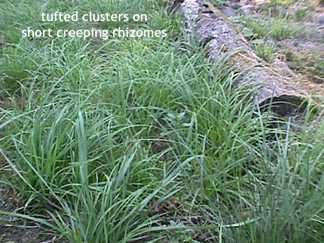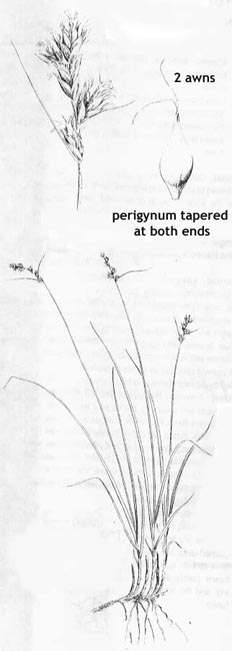

General Species Description
- This sedge grows in clustered tufts and has short creeping rhizomes. The stem is sharply triangular and is longer than the leaves. Involucral bracs are unequal in length, with the longest at the lower spikes.
Leaves
- Leaves are attached at the bottom of the stem and are reduced to sheaths at the very base.
Inflorescence/Flowers
- There are fewer than ten flowers loosly spaced. The female flowers have slightly redish scales and are below the male flowers. They have two stigmas, lens-shaped achenes, and perigynium is tapered at both sides. The lower involucral bracts are long, nonsheathing, and awn-tipped. Blooms May through August.
Fruits
- The achene (fruit) fills the tapered peri and is lens-shaped and 1.8-2.2 mm long.
Habitat
- Carex tumulicola is found in open, grassy slopes and dry meadows and open forests. They are especially found adjacent to wet meadows.
Range
- It is found in southern and northeast Oregon.
Similar Species
- Carex tumulicola is easily confused with C. deweyana, which does not have rhizomes and has female flowers terminal with male flowers below in each spike.
Ecological Value
- The water-dispersed fruits are eaten by insects, waterbirds, finches, and mammals. Leaves are used as nesting materaial.
Human Value
- Leaves may have been used by Native Americans as thread to decorate hide garments.
References
- Cooke, Sarah Spear. A Field Guide to the Common Wetland Plants of Western Washington and Northwestern Oregon. Seattle: Seattle Audobon Society, 1997.
This page was created by: Wendy Walters, August 1998
Return to Northwestern Oregon Wetland Plants Project